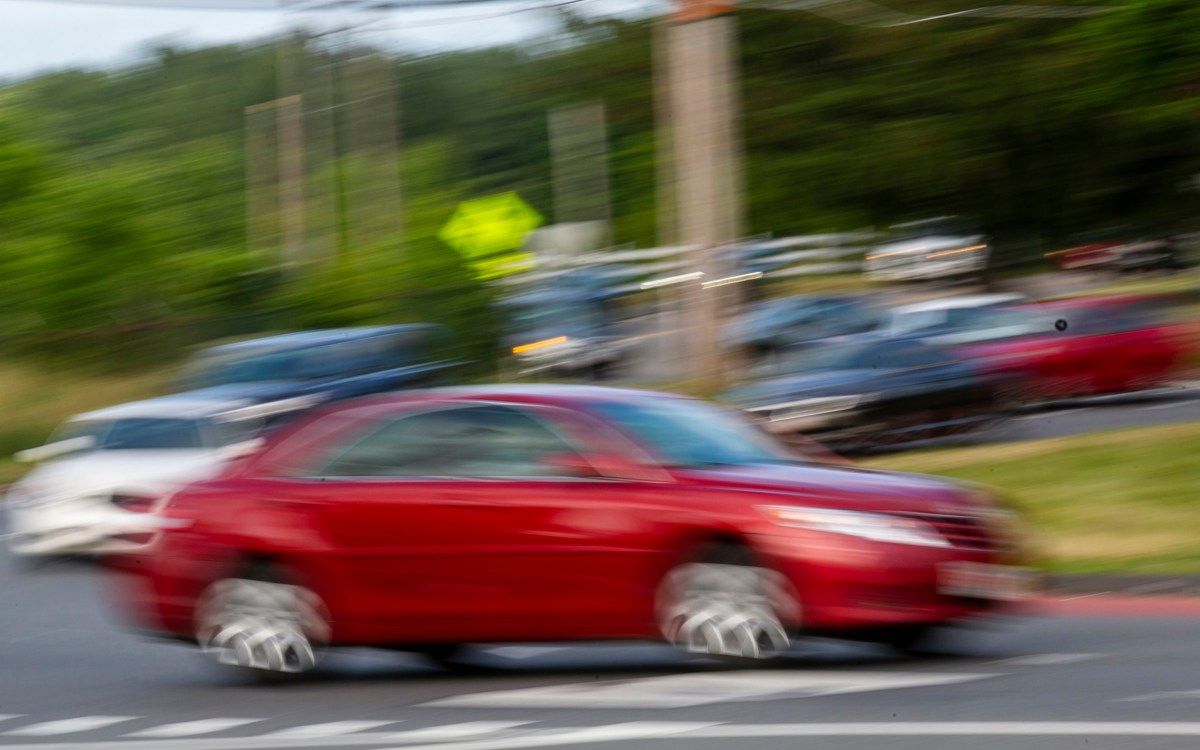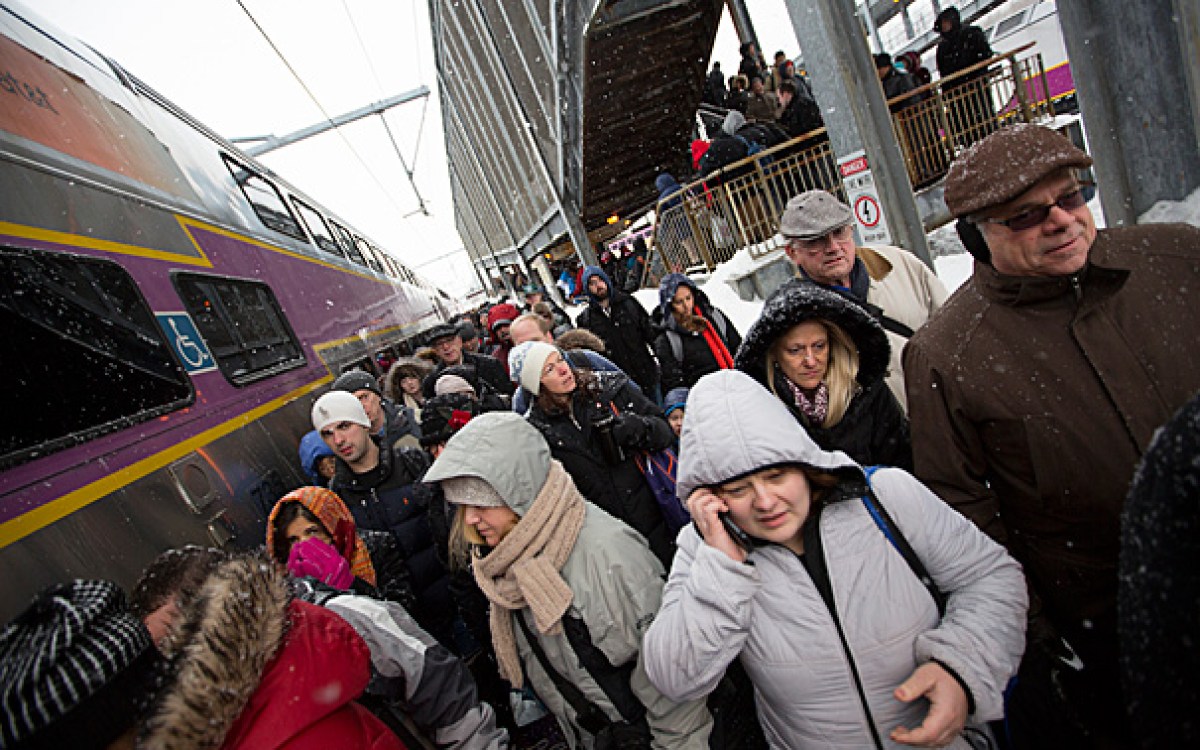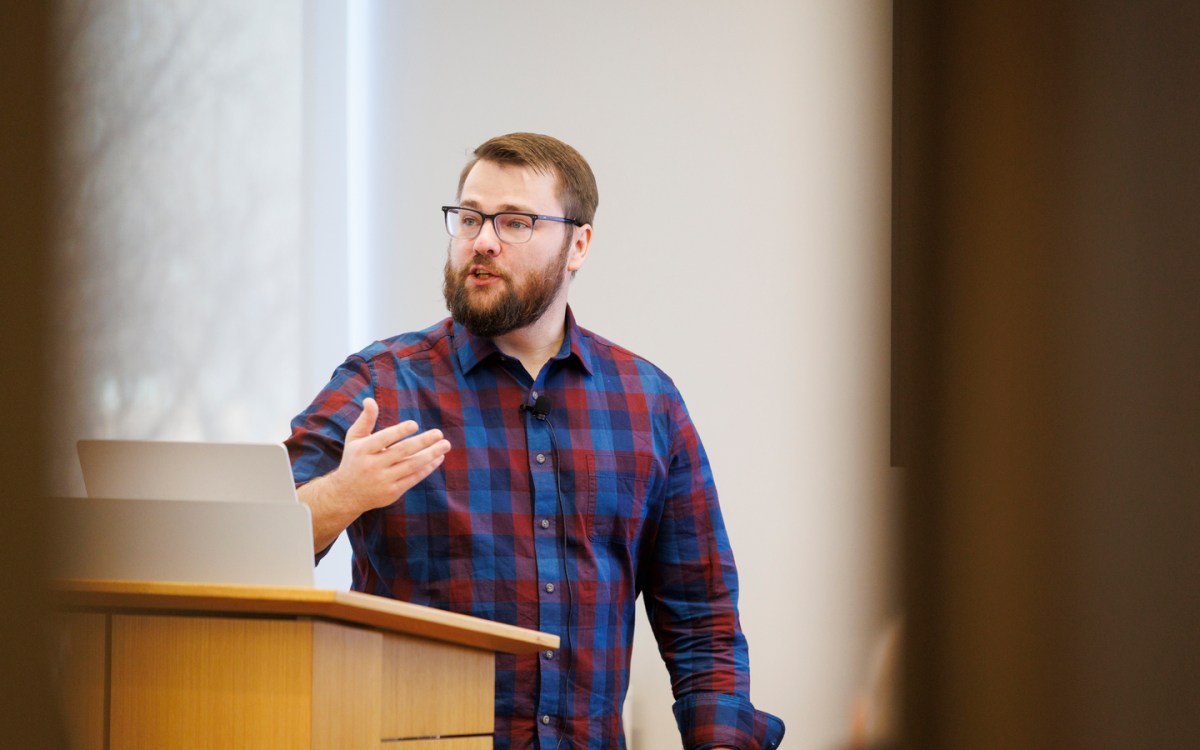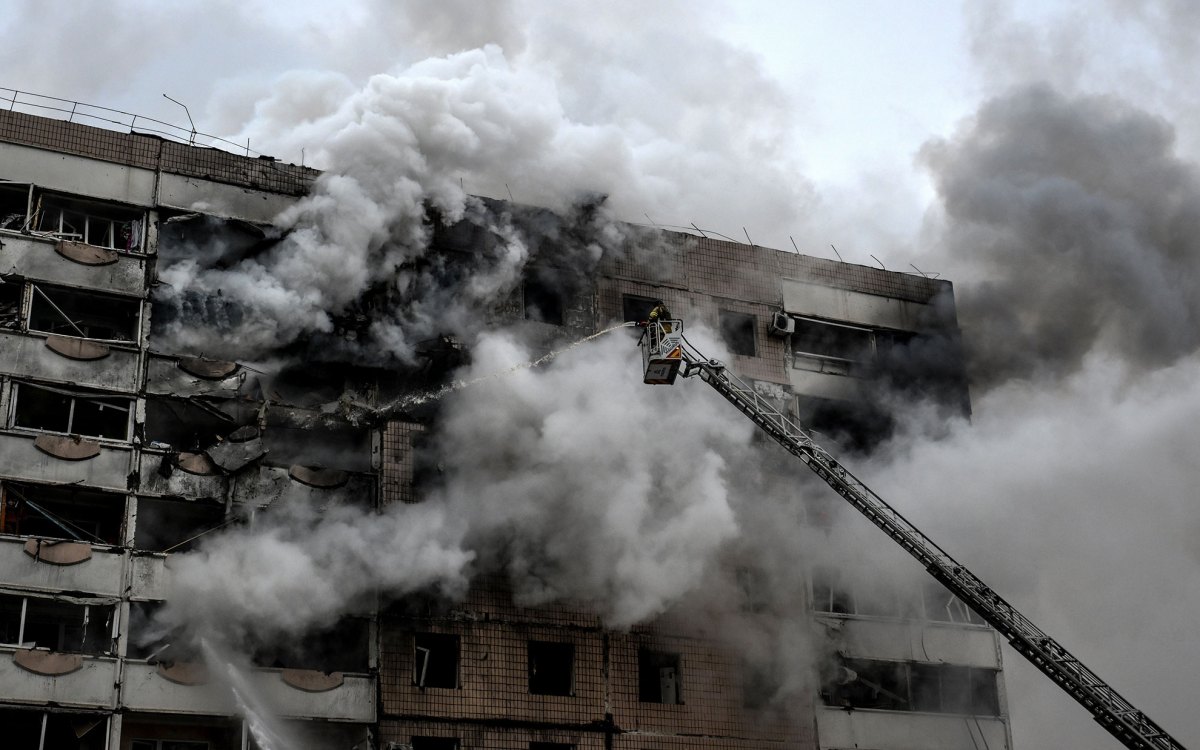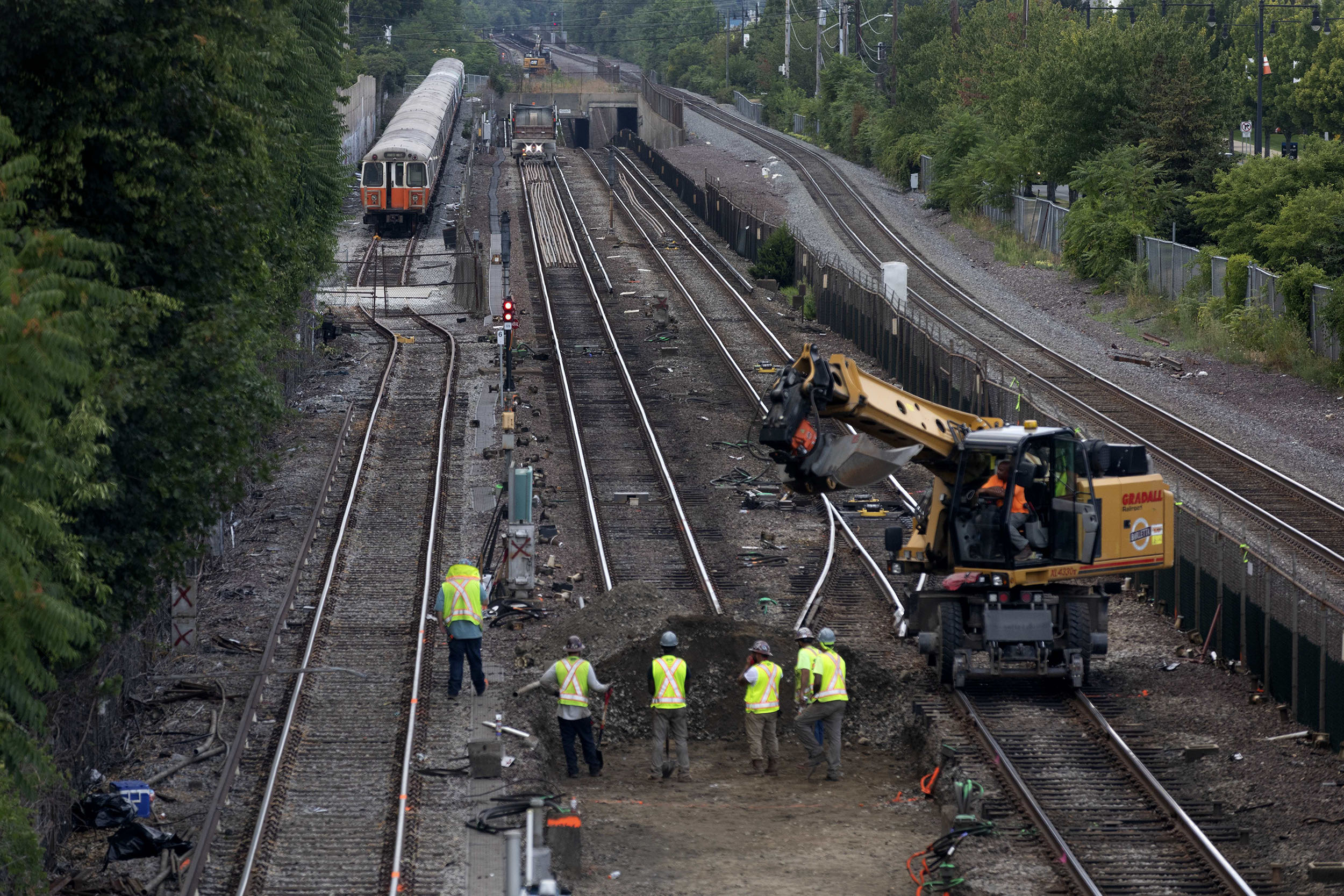
Workers remove sections of track on the Orange Line in Medford.
AP Photo/Michael Dwyer
Has the T hit bottom?
As transit leaders implement unprecedented shutdown, Kennedy School analyst offers some advice: Stop fussing around the margins and think big
Following a string of major safety failures, the MBTA has halted all service on the Orange Line, and on the Green Line from Government Center to Somerville’s Union Square until mid-September. T officials say the monthlong shutdowns, the first in the 125-year-old system’s history, are necessary to complete critical repairs.
Last month, the Federal Transit Administration launched an investigation into the MBTA’s safety practices. Massachusetts representatives in Congress and Beacon Hill lawmakers have called for the T to go into federal receivership. The Federal Railroad Administration is looking into problems with the MBTA Commuter Rail, which is run by Keolis.
To better understand why the T and other public transit systems struggle with safety, financial, mechanical, and labor problems, the Gazette spoke with political scientist Justin de Benedictis-Kessner, an assistant professor of public policy at the Kennedy School who studies transportation policy issues. Interview has been edited for clarity and length.
Q&A
Justin de Benedictis-Kessner
GAZETTE: Some say that if its finances were adequate, the T could plow through its lengthy maintenance backlog and pay down debt. Others say overhauling operations, reforming the T’s culture, and hiring better personnel are what’s needed to turn the system around. What do you see as the key areas the MBTA needs to fix to instill public confidence?
DE BENEDICTIS-KESSNER: I don’t think there’s a simple answer, unfortunately. There’s a lot of things Massachusetts has tried and the MBTA has tried. Increasing the amount of money the state legislature appropriates for the T — the kind of transformative investment that could make up for a generation of underfunding of the MBTA — would start to get this transit authority back on track.
Unfortunately, we don’t have any good models for this. We’re not, for instance, going to impose a huge new revenue tax on the Boston area. That’s the way some transit agencies with true regional governance, like in California’s Bay Area, might try to fund increased improvements — have a funding source that can keep increasing revenue. Massachusetts needs to realize that this is a huge economic driver of the entire eastern half of the state. They’re not doing that; what they’re doing is saying, “How do we tweak things around the margins? How do we increase funding for capital outlays?”
In the last five-ish years, the Baker administration has focused on the way we might increase capital expenditures, make capital expenditures much more efficient — which is needed, of course — but has focused less on some of the operating expenditures issues. And now the chickens are coming home to roost when you see problems related to safety. A lot of the safety issues that we’re seeing with the MBTA now are partially the result of years and years of understaffing and underpaying.
“Massachusetts needs to realize that this is a huge economic driver of the entire eastern half of the state.”
GAZETTE: The T has had nine general managers since 2010 and empowered numerous oversight panels to review the agency and recommend reforms, yet the same problems remain. Why?
DE BENEDICTIS-KESSNER: In Steve Kadish and Gov. Charlie Baker’s new book [“Results: Getting Beyond Politics to Get Important Work Done”], they talk about accountability within the T. That’s one of the things they claim they fixed. One piece I think they’re missing is creating structures of external accountability. The average person who relies on transit sees a system that is failing them again and again and there’s no real way for them to get the policy they want. External accountability for the MBTA is not there because most people don’t realize who’s responsible for poor service, not just at the T, but who among the public officials they vote for, so people are often blaming the wrong public officials. People aren’t able to attribute responsibility to someone they could punish or reward at the ballot box. That external accountability is missing.
GAZETTE: How much is needed to bring the system up to speed? A few years ago, a report said it would take at least $10 billion just to get through the T’s maintenance backlog.
DE BENEDICTIS-KESSNER: There’s not a precise estimate and there’s actually a bigger problem: Even if this miraculous $10 billion comes down from the legislature or, more realistically, if there are huge amounts of federal transit funding that can go toward this, which we’re going to see some of in the next couple of years, the problem isn’t just the money, it’s being able to spend it. If you haven’t been buying new train cars in 30-50 years on a regular basis, if you haven’t been updating your cars every 10 years or repairing them or retrofitting them, there’s not going to be an industry sitting ready to do that — to build those cars, to repair those cars. This is where we really get embarrassed by countries like China. They’re not just spending once every 30-50 years on new train cars, they’re doing this continually and they’re continuously expanding their transit systems, which creates a whole private market for these things. In the U.S., when we have huge amounts of money float down from the sky, we’re not able to spend that money as quickly or as efficiently because we don’t have that private market creating those goods that are needed.
“The average person who relies on transit sees a system that is failing them again and again and there’s no real way for them to get the policy they want.”
GAZETTE: The Massachusetts and D.C. transit systems face possible takeover by federal authorities over chronic safety concerns, while New York City, which has seen a spike in violent crime on the subway, anticipates the MTA will be short $2.5 billion in 2025. City and state officials know how vital transit is, so why do they let things deteriorate to the point where the federal government threatens to step in?
DE BENEDICTIS-KESSNER: There’s a lot of possibility for what I would call shifting blame to other people with a service like transportation, where it’s never clear who’s actually responsible. One of the sad things is the federal government can take over a transit system but that doesn’t necessarily solve the problem. We’re not seeing this kind of takeover yet with Boston, but they’re doing serious safety reviews and ordering them to change operations. But if they come in and take over some of the operations, it’s going to result in drastically less frequent service. It might be safer, but it’s going to be a much less useful service to a lot of people. If these kinds of safety reviews aren’t coupled with increased investment in operations, you’re not going to be able to fix anything long-term. You’re just going to limp along as a struggling transit system.
GAZETTE: Are there any U.S. cities doing a good job with public transportation?
DE BENEDICTIS-KESSNER: I’m not as up to date as I should be on the state of every U.S. city’s public transit system, but the mindset of seeing public transit as a utility for people is so obvious if you leave the United States. If you go to Colombia and visit some of the bigger cities there, there’s some really good public transit. In a lot of Asian cities, you see that this is a service that has to exist, and economies would not function without it. And if you go to France and the Netherlands, you see these things coupled with other forms of functioning transportation that aren’t cars, too.
GAZETTE: The service is still very inexpensive for riders in those countries in large part because national governments have decided that’s a cost they’ll absorb. They don’t expect each city to entirely bankroll their own public transit.
DE BENEDICTIS-KESSNER: Exactly. National and regional governments see transit as a public utility, and they’re not seeing fares as a way to recoup a significant amount of costs. That’s just very different from how many cities in the U.S. see public transit.
GAZETTE: Can cities and states come up with their own initiatives to finance public transit — congestion pricing or a gas tax — or does the federal government have to be involved?
DE BENEDICTIS-KESSNER: States doing things on a regional level, like congestion pricing, can be incredibly effective. They can price the externalities of people driving alone into a city more appropriately. Right now, driving alone comes with very few costs to the individual making that choice, but a lot of societal or external costs to the people experiencing traffic in a city and to the people experiencing roadway emissions. On a more local level, governments can appropriately price the cost of parking. This is a huge issue that cities have ignored for far too long. We saw this in the pandemic when restaurants started using parking spaces to have seating outdoors and cities realized, “We should be charging them for this because this makes their business much more successful.” A lot of times they were just nominal fees of a couple of thousand dollars, which pales in comparison to the amount of revenue these places are getting out of their new space. And then, in the winter, we’d go back to letting a car use that space for free or for some small meter fee, which is just ludicrous. I think local governments are starting to say, “We can appropriately value this public space and we can appropriately value negative externalities, like emissions and traffic.” That can help fund the more transformative investments that are needed to seriously address failures of public transportation.



